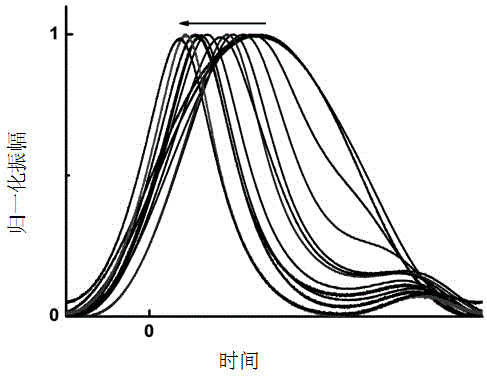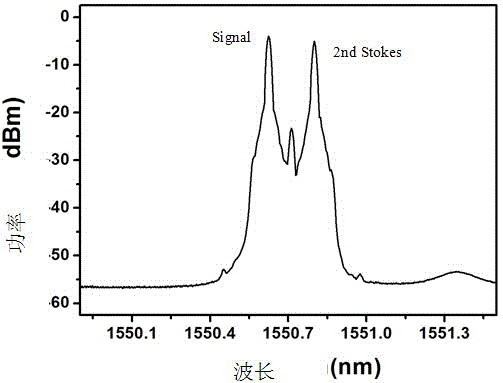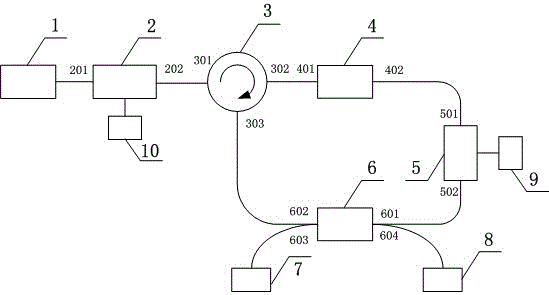Fast-light-tunable device based on stimulated Brillouin scattering
A technology of stimulated Brillouin and tuning devices, which is applied in the direction of laser scattering effect, optics, nonlinear optics, etc., can solve the problem of slowing down the speed of light, accelerating the speed of light and its tunable performance. , complex processing technology and other issues, to achieve the effect of good compatibility, continuous adjustment of fast light advance time, and realization of structure
- Summary
- Abstract
- Description
- Claims
- Application Information
AI Technical Summary
Problems solved by technology
Method used
Image
Examples
Embodiment Construction
[0024] The implementation of the present invention will be further described below in conjunction with the examples and drawings, but the implementation and protection scope of the present invention are not limited thereto.
[0025] Such as image 3 , is a structural schematic diagram of a fast light tunable device based on SBS, wherein the pigtail output of the optical pulse light source module 1 is connected to the first port 201 of the optical amplifier 2, the optical amplifier 2 is connected to the optical amplifier control module 10, and the second port of the optical amplifier 202 is connected to the first port 301 of the fiber circulator 3, the second port 302 of the fiber circulator 3 is connected to the first port 401 of the single-mode fiber 4, the second port 402 of the single-mode fiber 4 is connected to the attenuation tunable module 5 The first port 501 is connected, the attenuation tunable module 5 is connected with the control module 9, the second port 502 of t...
PUM
| Property | Measurement | Unit |
|---|---|---|
| Line width | aaaaa | aaaaa |
Abstract
Description
Claims
Application Information
 Login to View More
Login to View More - R&D
- Intellectual Property
- Life Sciences
- Materials
- Tech Scout
- Unparalleled Data Quality
- Higher Quality Content
- 60% Fewer Hallucinations
Browse by: Latest US Patents, China's latest patents, Technical Efficacy Thesaurus, Application Domain, Technology Topic, Popular Technical Reports.
© 2025 PatSnap. All rights reserved.Legal|Privacy policy|Modern Slavery Act Transparency Statement|Sitemap|About US| Contact US: help@patsnap.com



